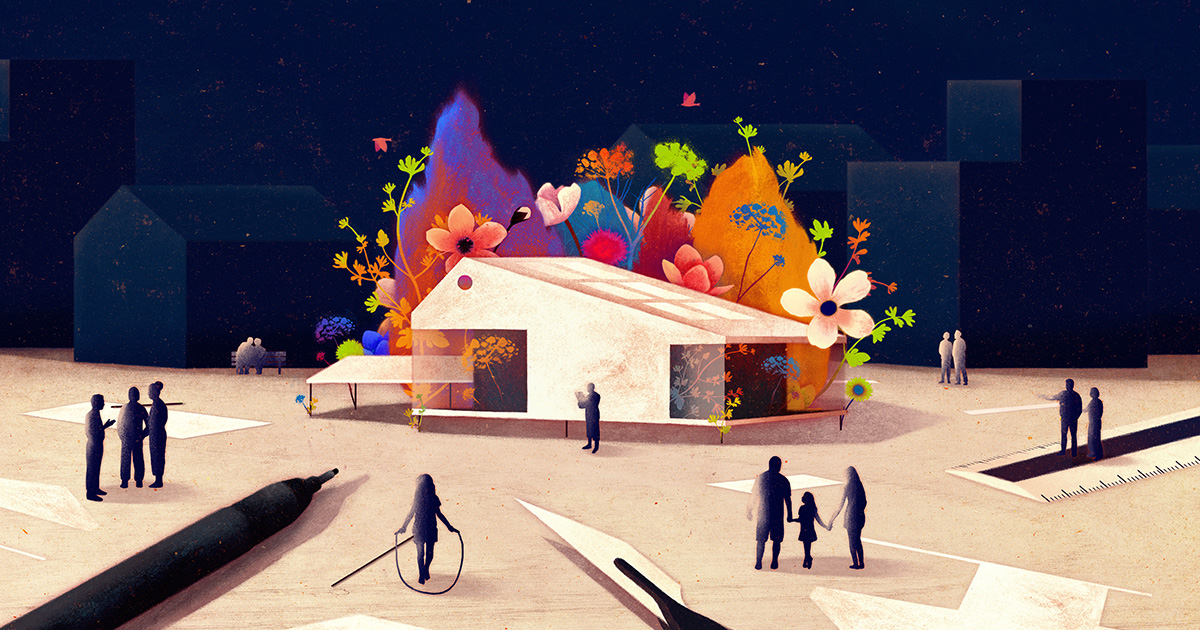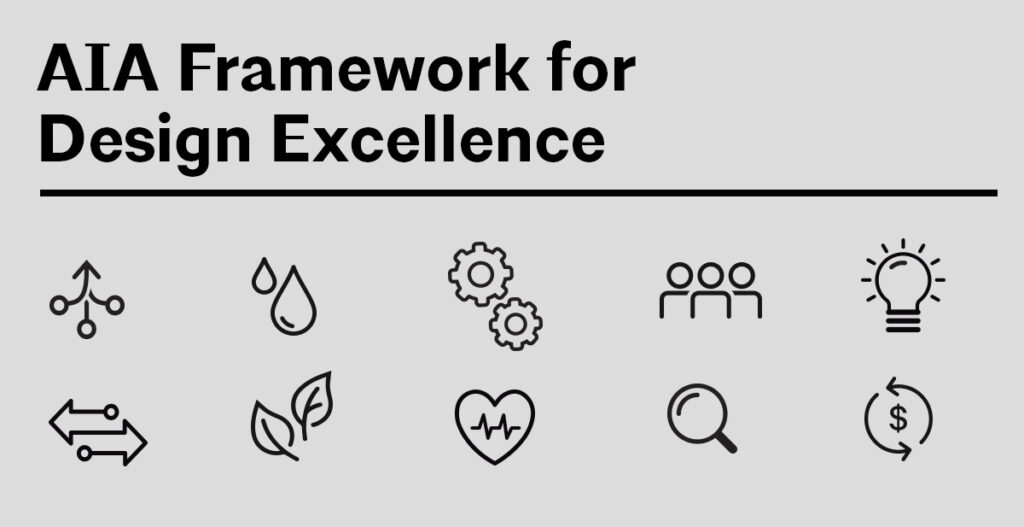
Equitable design for the built environment holds the power to remove barriers and burdens, physical or abstract, empowering and enabling people to gather and connect, live, and function to their highest potential.
“Buildings provide the basic fabric and context of our lives - both in the interior environments that shelter and nurture us, but also collectively in defining our shared urban realm,” said Chris Chatto, AIA, principal at ZGF Architects. “Just as the projects we design have a responsibility to meet their programmatic and functional directives, they also should relate to and enhance the context around them. This latter responsibility is even more important as many of our cities are struggling to recover from the many changes brought on by the pandemic.”
How architects design homes, workplaces, and communities—and engage diverse stakeholders in the process —is key to transforming the day-to-day practice of architecture to achieve zero-carbon, equitable, resilient, and healthy spaces.
From shaping public policy and practices that supports social equity and circular economy to investing in programs that engage underserved people your community, you can make a difference where you live and in towns throughout the United States.
6 ways you can take action to increase equity in the built environment

1. Support the Architects Foundation
As the philanthropic partner of AIA, the Architects Foundation lays the framework for architecture’s future by attracting and inspiring new, diverse generations of architects to have a positive impact in the world. Through grants, scholarships, and the Communities by Design program, the Architects Foundation is expanding its investments in the people and processes that are increasing equity in the built environment.
Learn more about the Architects Foundation and how you can invest in this work.
2. Work with Communities by Design
The Architects Foundation’s Communities by Design program provides a ready, applicable model to overcome the challenges in the built environment by providing communities with a path to success. The program unites architects and other professional disciplines to work alongside the residents, professionals, and institutions of host communities on key local issues.
“The process heavily involved public participation from initial plan to final completion of each individual project,” said Nathan West, city manager, Port Angeles, Washington. “Ten years after the sustainable design assessment there continue to be new measures implemented and a strong support for this important community plan.”
Every project is community-driven and includes an intensive process to match professional expertise with public values and aspirations.

3. Discover the ROI of High-Performance Design
“Climate change impacts are apparent, including extreme heat, flooding, and wildfire, and will only continue to intensify. These impacts are costing the U.S. billions per year, not to mention the loss of human life due to heat stroke, poor air quality, and wildfire,” said Ariane Laxo, sustainability director, HGA. “High-performance design can contribute to saving lives by reducing the impact the built environment has on future climate change and can also protect against future changes in climate.”
The economics of high-performance design have historically been seen as a barrier to implementation. ROI of High-Performance Design outlines its many cost benefits, such as an increased market value, lower operating, and whole lifecycle costs. This AIA report provides case studies for why high-performance investments increase asset value, reduce up-front and operational costs, and make spaces healthier for occupants. Use this tool when you advocate for high-performance design projects where you live.
4. Seek investments for underserved communities
The Urban Institute suggests using the term “priority communities” to describe communities that “have been historically marginalized, overburdened, and underserved.” In conjunction with the University of Washington, AIA has compiled resources with the goal of educating architects and those they serve. The Return on investment (ROI) of investing in equitable communities provides talking points, case studies, and funding opportunities to guide those seeking to increase investment in an equitable built environment. The resources provide examples that may be adaptable to a variety of circumstances and aims to provide a base-level understanding about the financial opportunities and benefits of working in equitable communities.

5. Track policy changes and grant opportunities
AIA has been an enduring, vocal leader in effort to deliver environmental justice through leveraging public investment with private capital and consistently encouraging the design community to share with clients and communities the opportunity to apply for the billions of dollars available as federal and state agencies design and administer competitive grant competitions to help realize climate goals.
The Inflation Reduction Act is the the largest federal investment to combat climate change in history, providing funding for energy efficient building and creating grants for communities that champion energy efficiency, zero emissions, resilience, and healthier and more sustainable building materials and technologies. The White House Inflation Reduction Act Guidebook provides an overview of the clean energy, climate mitigation and resilience, agriculture, and conservation-related investment programs supported by the law, in addition to a list of grants available for state and local governments, nonprofits, and lenders. Throughout the implementation process, AIA has remained engaged by supporting federal agencies with thought leadership to ensure these unprecedented provisions deliver the impact envisioned across our society.
AIA’s advocacy efforts address the needs of our economy, climate, and communities, tackling issues to support equity and advance quality of life, as well as advocating for just practices, ending systemic racism in the built environment. Learn more about AIA and its advocacy efforts at every level of government and across the globe.
6. Work with and encourage firms you employ to utilize AIA resources and participate in AIA programs.
2030 Commitment - When you work with a 2030 Commitment firm, you join forces with architects committed to adapting their work to support energy performance and decarbonization Guided by a Sustainability action Plan, these firms have the data and tools to lead projects that support a client’s bottom line while achieving energy savings metrics and emissions reduction.
Architecture & Design (A&D) Materials Pledge - Likewise, architects who have signed the A&D Materials Pledge commit to support human health by eliminating the use of hazardous substances, support social health & equity by preferring products from manufacturers that secure human rights in their own operations and in their supply chains, support ecosystem health by preferring products that support and regenerate the natural air, water, and biological cycles of life through thoughtful supply chain management and restorative company practices and support climate health by preferring products that reduce carbon emissions and sequester more carbon than emitted, and support a circular economy by reusing and improving buildings and by designing for resiliency, adaptability, disassembly, and reuse, aspiring to a zero-waste goal for global construction activities.

AIA Framework for Design Excellence - Comprised of 10 principles and accompanied by searching questions, the Framework seeks to inform progress toward a zero-carbon, equitable, resilient, and healthy built environment. These guidelines are to be thoughtfully considered by designer and client at the initiation of every project and incorporated into the work as appropriate to the project scope. The Framework for Design Excellence represents the “highest principles of architecture,” said Allison Anderson, FAIA, 2022 and 2023 chair, Framework for Design excellence task group on the Committee on Climate Action and Design Excellence.
The Equitable Development Framework - Architects can leverage existing equitable development frameworks to guide their role in creating and promoting healthy, vibrant, and sustainable communities. AIA analyzes five of these systems in the Equitable development framework: An introduction and comparison for architects to identify the agency architects and designers have in driving valuable change.
Guides for Equitable Practice - Helps architects make the business and professional case for ensuring their practice meets the career development, professional environment, and cultural awareness expectations of current and future employees and clients. Chapters in the guide address real-world-derived best practices, relevant research, and other tools to help architects address a variety of workplace culture issues within the profession.